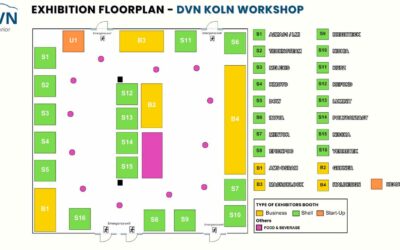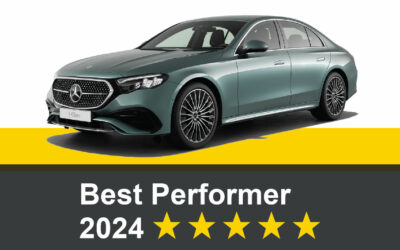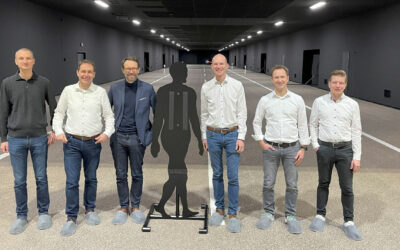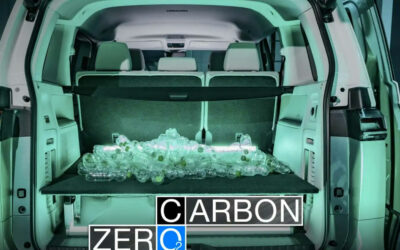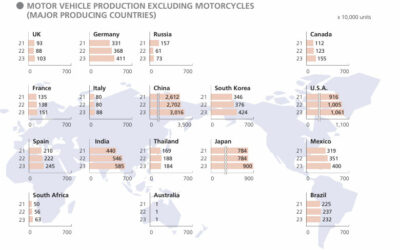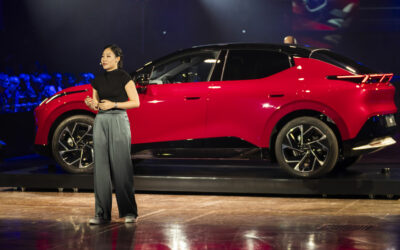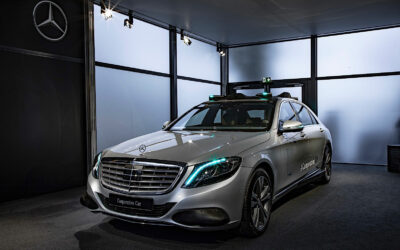By Wolfgang Huhn
On Sunday, 2 days before CES officially opened, an official media event called CES Unveiled took place. All awardees could present their stuff on a 5-metre booth with a table and a black curtain behind to separate the aisles. Everything was a bit improvised. All companies had the same booths, billions-revenue international groups beside 10-person startups. A nice setting.
Interesting from lighting point of view:
OP Mobility presented their front end for Rivian with the first-ever ADB headlamp for the US. In the stripe between the headlamps, they used RGB LEDs from ams Osram for animation functions. Longtime DVN community member Shammika “Shammi” Wickramasinghe, who newly works for OP Mobility in Michigan, introduced the technology. It is a complete front end driven by a power line and a CAN bus only.
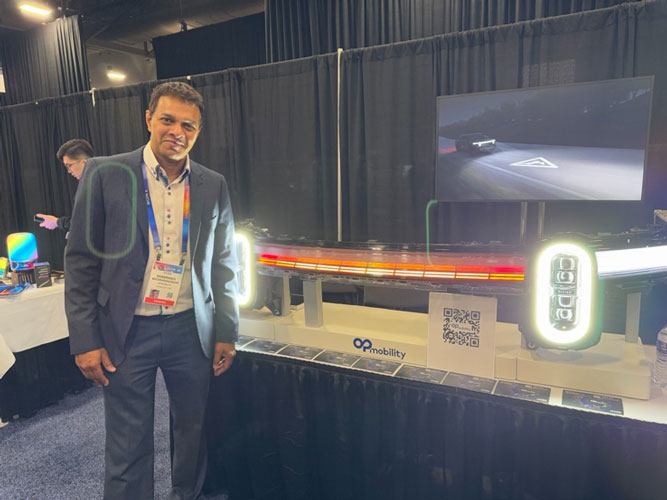
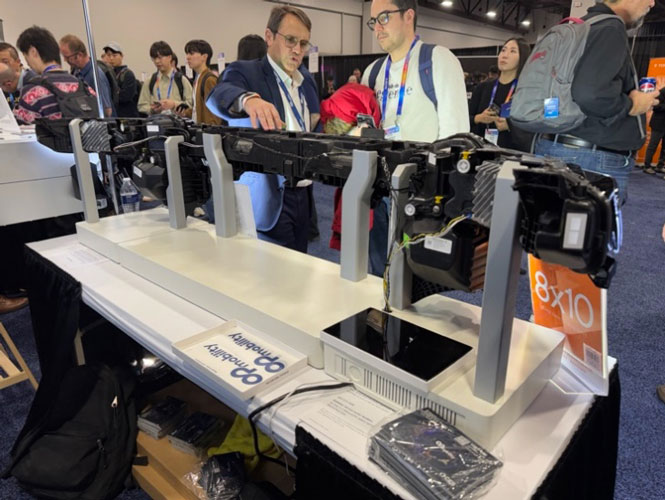
Atala by OLEDWorks were at this CES pre-event with the OLEDs for the new Audi Q6 etron rear lamp. Animation of different signatures, warning functions, and dynamic rear lamp functions were demonstrated by Siara Campbell.
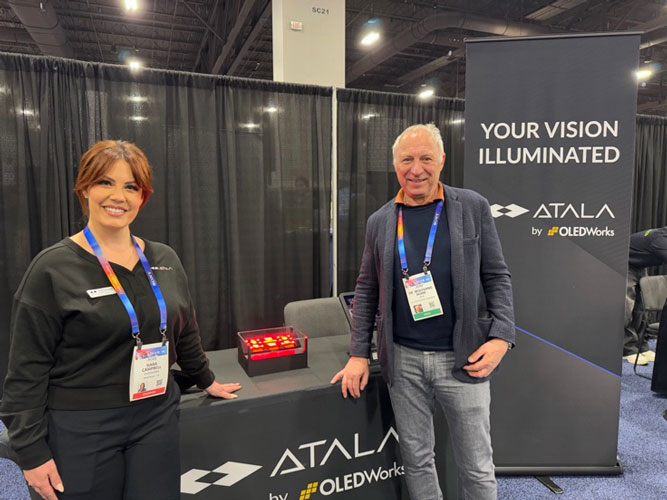
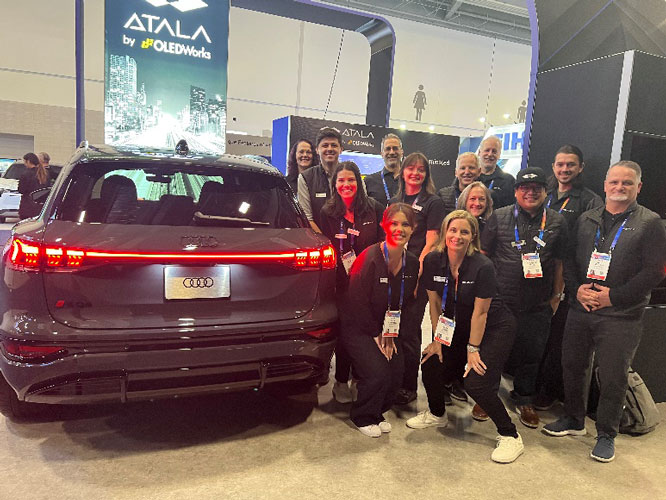
Tactotek CEO Jussi Harvela, together with VP Thomas Lipscomb, introduced functional samples of their technology, but no serial parts. The serial projects are not released yet by Tactotek’s customers to show details to the public. Their foil technology for interior application improves the lighting system in terms of aesthetics and efficiency. This becomes more and more important in context of the more than 2,000 LEDs in a luxury car’s interior.
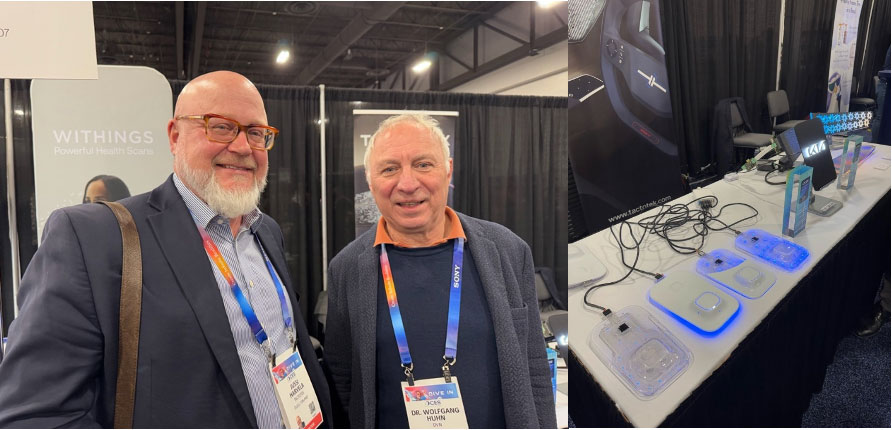
Miscellaneous
As usual at the CES many more interesting high tech, surprising products and some funny innovations are shown, for example:
A Guitar without strings with a very…let’s say…interesting sound.

E-Roller Blades with a motor-driven middle wheel, a battery pack on the user’s back, and a handheld remote control.
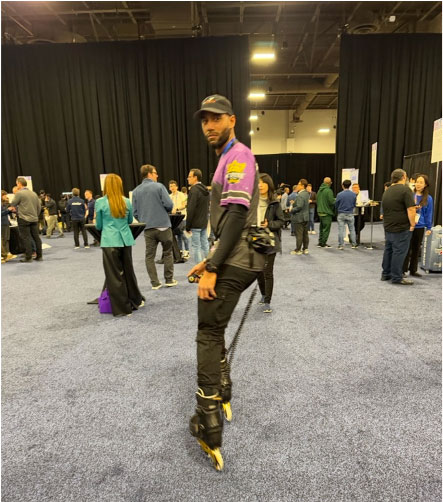
E-Touring Ski
My favorite innovation was clearly the e-Ski. Everyone who’s been on a ski tour with a long uphill climb knows what I mean; it is super exhausting. Here is a possible solution, a bit like the e-bike concept.
The belts for uphill climbing are like a roll, driven by an electric motor on top of the ski. For the downhill part the motor and belts are disassembled and stowed in the skier’s backpack. The slits, where the belt goes through the ski, are closed by clips and tape.
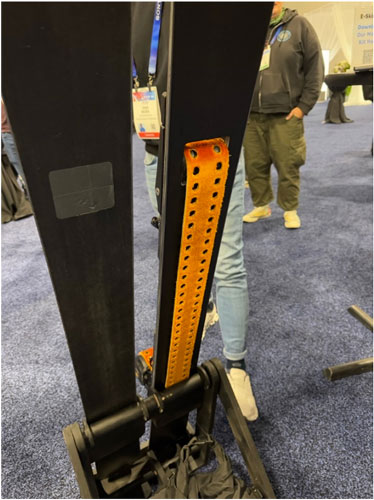

Press Conferences
Monday was press conference day, and DVN chose to attend three—from Toyota, Zeekr, and Samsung—out of the many options. Toyota’s ‘Chairman and Master Driver’, as Akio Toyoda is titled, gave the speech. I expected an outlook to Toyota’s car business and some future technical highlights, but I was completely wrong. He talked in his nice and sometimes funny speech about the building of a new city which has already begun. The city will be totally carbon-neutral and sustainable. It’s built for Toyota employees, retired persons, artists, and scientists who shall live there in a few years. The word “car” was not often used in the 45-minute speech.
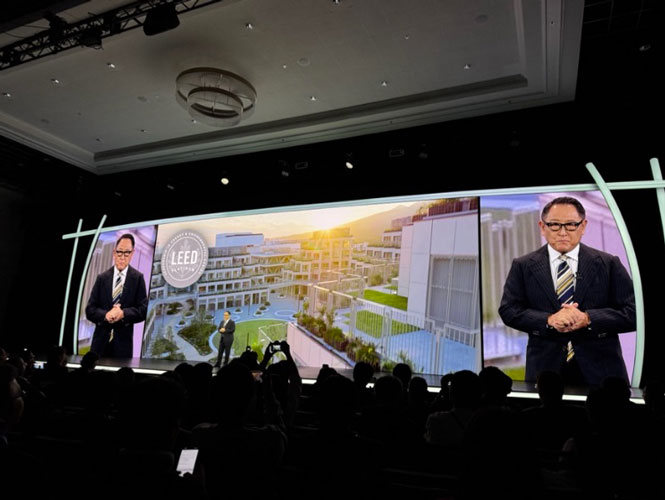
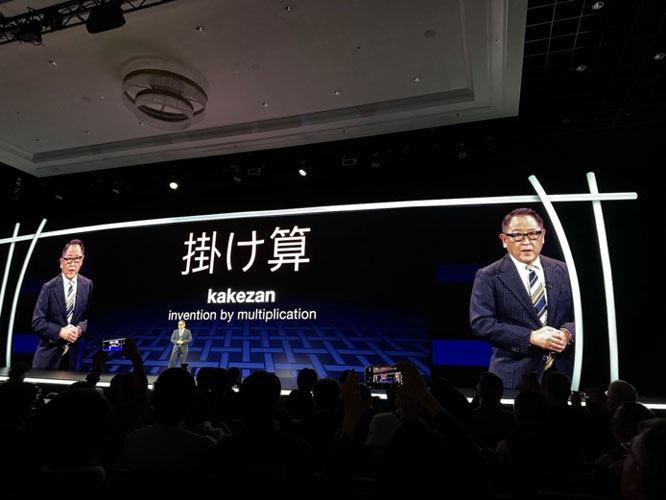
The new Japanese word describing the (usually very successful) Toyota processes is kakezan, ‘invention by multiplication’. Maybe we will hear « kakezan » often in future.
The Zeekr keynote, later in the day, was the complete opposite of Toyota. Car details were presented by CTO Giovanni Lanfranchi and vehicle line executive Zhu Ling. They talked about their progress in the product development cycle which is based on the use of the vehicle by the customer.
Their ‘heart values’ are emotional connection, privacy and trust, seamless design, feedback integration, hyper-personalization, and some others. Zeekr have 7,000 R&D employees, mainly in Hangzhou and Gothenburg, and they’ve filed 5,800 patents to date.
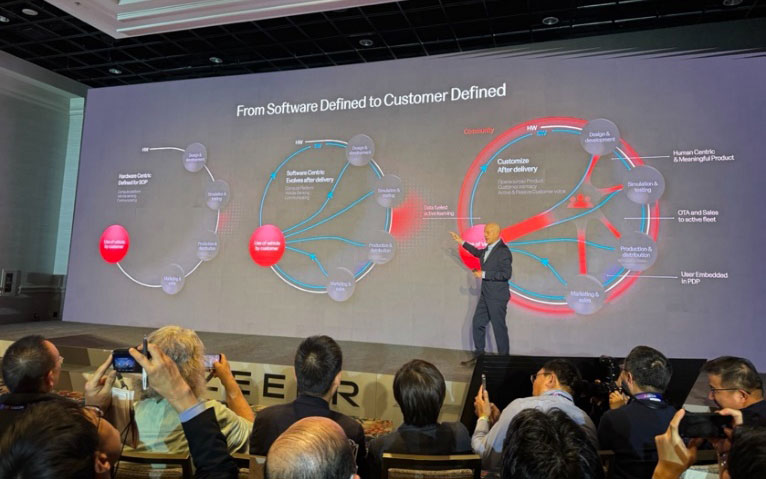
Zeekr’s way to develop a car goes from ‘software-defined’ to ‘customer-defined’.
Samsung had no automotive content in their press conference with different speakers; rather, they introduced how home life will be improved with Samsung ‘AI’ everywhere.
Tuesday was when CES finally opened for real.
BMW
Two Neue Klasse cars were on display without any show or presentation around. They spoke for themselves. The design is really all new.
The sedan shows some interpretations of the 3.0 CS and other BMW cars of the 1970s. The shark nose and the c-pillar line with the typical Hofmeister Kink are examples. The window line is clearly without any example. The line of the front fender is taken over by a white stripe in the windows. The real lower window line sinks about 100 mm to open and light up the interior. The windscreen is taken long into the roof which is also partly made of glass.
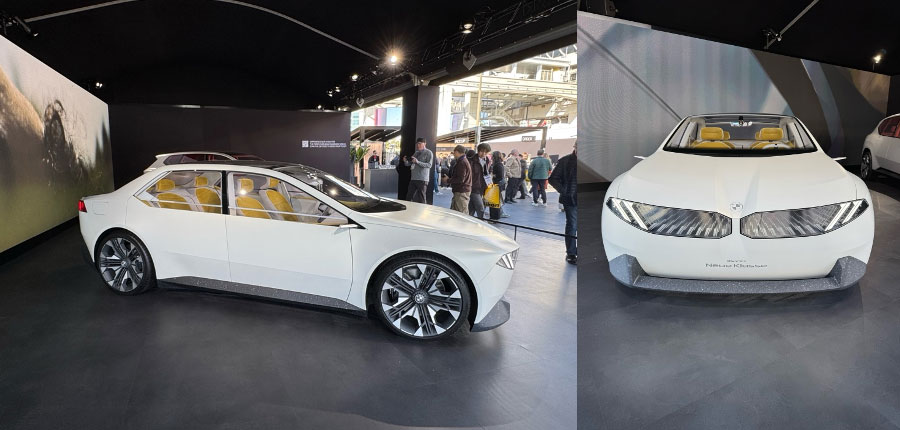
The front is dominated by the wide kidneys, which include the lighting elements completely. The transparent headlamp’s interior plays with 3D and mirroring effects using layers of film. Of course, the whole front is illuminated. We are looking forward to seeing and night-driving the production car soon.
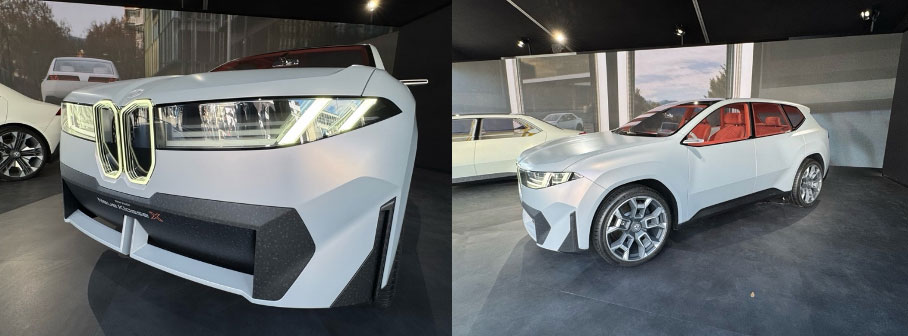
The biggest part of the BMW area was a building for the demonstration of their all-new user experience concept. The presentation itself—to enter you needed to book a time slot in advance—was a Las Vegas-style show. A comedian in dialog with a video of a movie star from Hangover presented the interior, together with two BMW guys.

They say they have shrunk the audience and so the interior looks bigger. You’ll find more about the interior concept in the DVN CES report which will be published soon.
Honda showed an SUV and a hyper sports car called the Honda 0 Saloon and Honda 0 SUV. The lighting on both cars was just conceptual; we will see if something out of these studies will come to the road. Anyway, the style is distinctive and a typical clean Honda design.
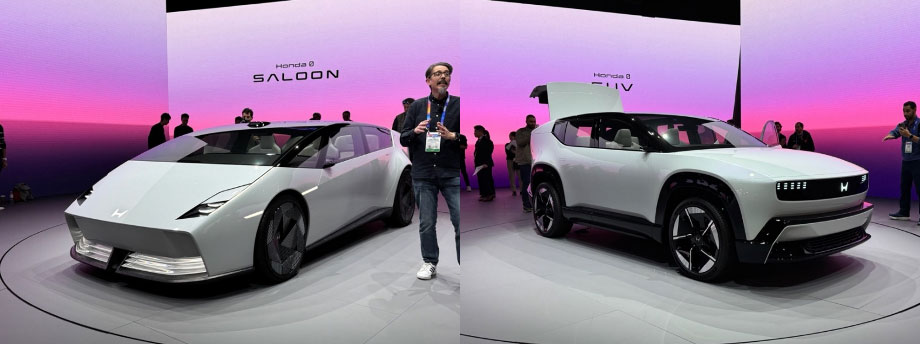
Scout, the VW brand, showed in the outside area their pickup truck and SUV, both having front lamps with ‘golden’ light colour for differentiation. The colour temperature looks really very low which means that they use special LEDs and give away some efficiency for styling, which is most usual in our business.

Afeela, the car brand of Sony and Honda, was shown in the central hall (mainly home entertainment) beside the Sony booth. The Afeela car was presented two years ago, and it seems the same car today. It has both front and rear miniLED displays with very high resolution. The display showed ‘welcome’, ‘afeela’, ‘happy birthday’, and other text of that nature as well as videos from Sony Entertainment—movies and fun for children.
The car itself caries many sensors, especially lidar sensors which are on the front roof above the windscreen, looking like black warts, but this position is optimal for functionality. The lit logos in the displays are a must.
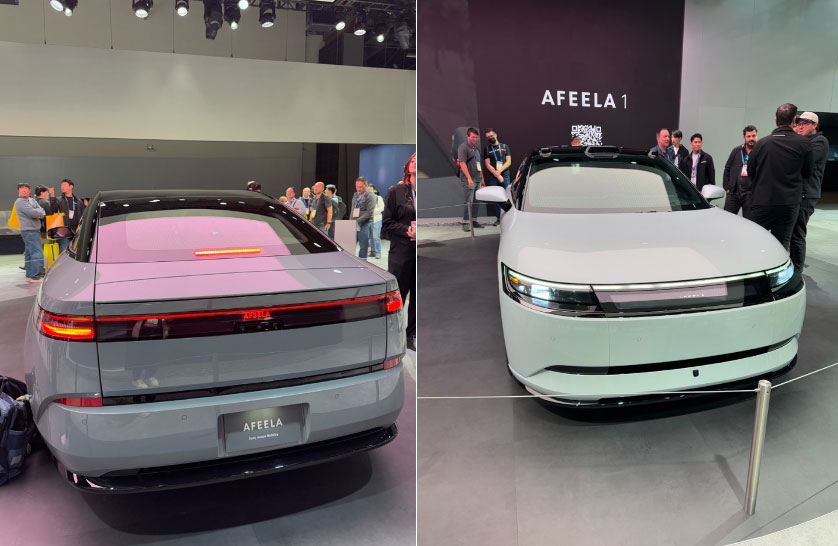
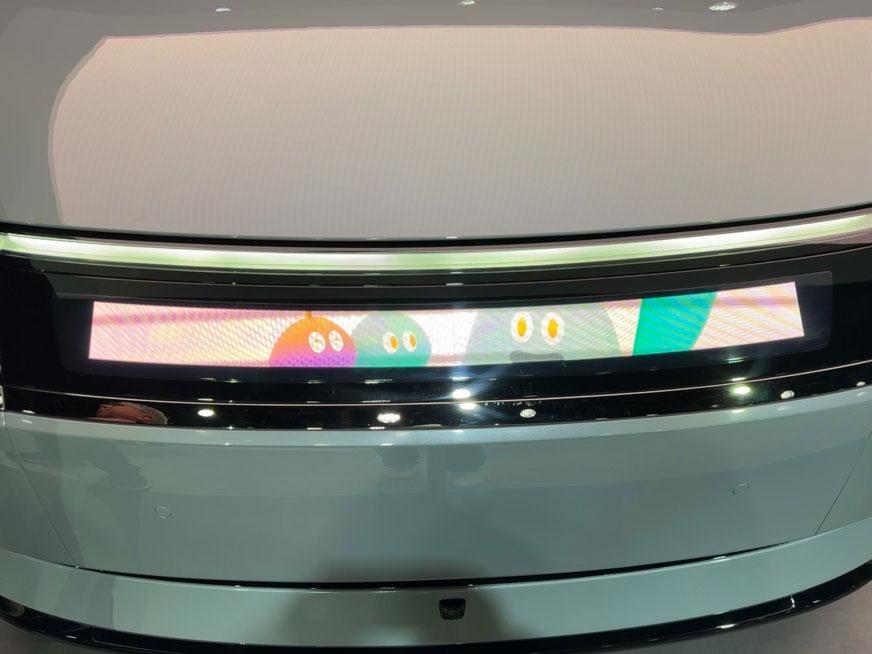
With that, I conclude this piece. The (even more) interesting part of the CES you will find in the DVN CES report very soon; you’ll want to download it and read the news about many more CES innovations and concepts from suppliers.
